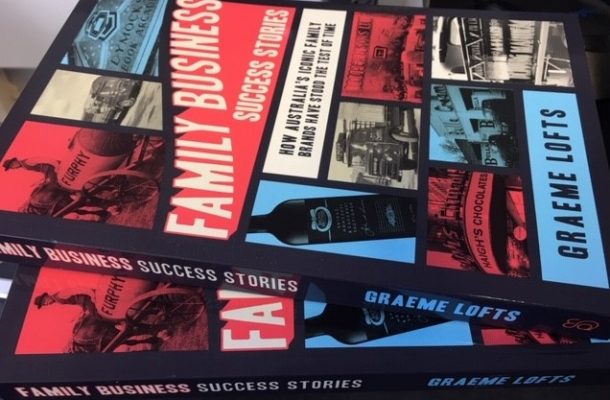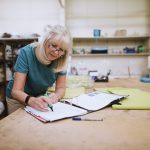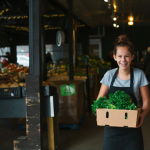Setting the scene for innovation

A climate of innovation doesn’t ‘just happen’. It comes about when an individual or a business sets the scene for ongoing innovative thinking. My new book, Family Business Success Stories, published by Major Street Publishing, tells the stories of eight family businesses who have operated continuously for more than 100 years.
The stories bring to light the entrepreneurship, risk-taking and innovations of all eight founders and members of subsequent generations. In this article, I describe the circumstances that set the scene for a climate of innovation at two of the companies featured in the book.
A broader perspective to the rescue: Coopers Brewery Ltd
At Cooper & Sons (now Coopers Brewery Ltd), brewing practices had remained largely unchanged for ninety years after Thomas Cooper established the family business in 1862 and by the 1950s they were regarded by other brewers as obsolete.
There was an urgent need for the modernisation of equipment and processes. Without that the future of the business looked bleak. The precursor to the innovations that were essential for the survival of the business was the decision by fourth generation Maxwell Cooper to undertake a postgraduate course in malting and brewing in the UK before taking on a position at a brewery in Newcastle on Tyne.
He returned to Australia in 1953 as not only the first formally trained brewer at Cooper & Sons, but the first member of the family to work at another brewery. Maxwell was full of ideas about improving practices at the family brewery, but it took almost fourteen years before the board allowed him to put his innovative ideas into practice by brewing a lighter beer in response to the changing tastes of consumers.
Having been discouraged in his teens from joining the family business by his father when he could see no future for the business, Maxwell’s nephew Tim completed a degree in Medicine at the University of Adelaide before moving to the UK, where he studied brewing science at the University of Birmingham and completed a Doctorate in Medicine at Bristol University. It wasn’t until 1990 that Tim finally returned to join the business, well qualified to take the innovative culture at Coopers to a whole new level.
Dr Tim Cooper oversaw the design and construction of Coopers’ new Adelaide brewery, which opened in 2001. The new plant was described as an intriguing fusion of innovation and nineteenth century brewing traditions.
The brewery has its own gas-fired power station and desalination plant. In 2017 a malting facility, described as the most technically and architecturally advanced plant of its kind in the world, was added, providing new opportunities for innovation.
Innovation through the generations: The Brown Family Wine Group
The innovative culture at Brown Brothers, now the Brown Family Wine Group, began with its establishment in 1885 by eighteen-year-old John Francis Brown.
Although he had no experience whatsoever in winemaking, John was aware of the success of nearby Rutherglen as a wine-producing district and was convinced that the land in the King Valley was more suited to vineyards than the existing grazing or cereal crops. He talked his father into a partnership, and they planted 10 acres of vines on the property.
Business was booming until 1916, when John was forced to rip up his beloved vineyard after the vines were devastated by the dreaded phylloxera insect.
He turned a disaster into an opportunity to innovate when, much to the dismay of other winegrowers in the region, he followed the advice of Victorian government viticulturist François de Castella and ordered enough phylloxera-resistant rootstock to replant thirty-five acres of varieties suited for table wines rather than the fortified wines favoured by most Australian wine consumers.
John’s son, John Charles Brown, had learned winemaking from his father and was also an innovator – even more progressive than his father. He experimented with uncommon grape varieties and derived great pleasure from seeing so many well accepted by consumers.
John Charles was quick to take advantage of newly emerging technology. Commercial refrigeration allowed him to expand production, improve quality and develop new aromatic wine styles. His innovations have inspired subsequent generations, who have continued to innovate, with new wine styles, the matching of food with wine and most recently, the move towards vineyards in the cooler climate of Tasmania.
At the forefront of the innovations at the Brown Family Wine Group is the Kindergarten Winery, a miniature winery, designed as a research and development facility. Since 1989, the Kindergarten Winery has allowed the winemaking team to experiment with new grape varieties and wine styles in small quantities and experiment with different viticultural and winemaking practices.
The Brown Family Wine Group has collaborated with the CSIRO to develop completely new varieties able to use less water, grow in warmer climates and tolerate different types of soil. Today, there are several unnamed varieties in tanks at the Kindergarten Winery and the current team of winemakers, including fourth generation Katherine Brown have taken on the mantle of innovation.
Graeme Lofts taught secondary school science for 25 years and is now a successful writer of textbooks and non-fiction. Heart & Soul: Australia’s First Families of Wine was published by Wiley in 2010 and his latest book, Family Business Success Stories, was released in 2019.








